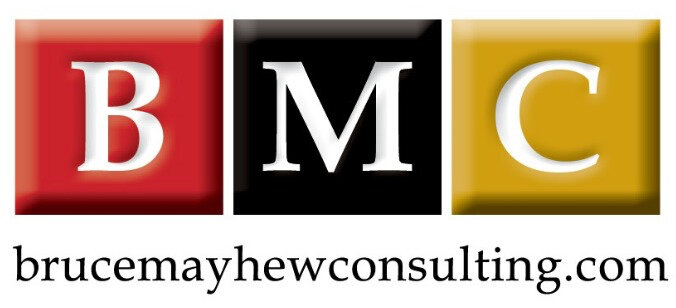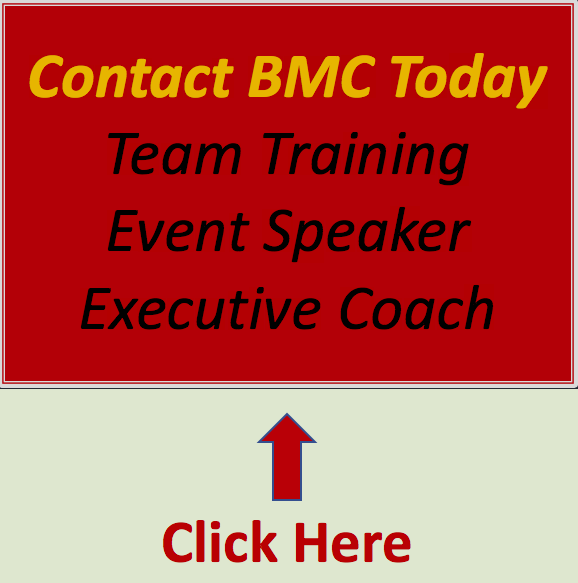How To Develop A Strategic Plan
/Knowing how to develop a strategic plan that meets the needs of the organization, its’ employees and the community it serves is a wonderfully rewarding task; and it’s also no small job. Developing a strategic plan may feel as daunting as playing a game of chess against a master. Truth is, it will likely take months and you might benefit from the clarity of external help / coaching, but I assure you, you can do it and it is worth it.
So how do you go about being successful when faced with this mammoth task? My quick advice is, “Be patient, take it one step at a time – don’t skip any steps, and include as many other people as possible at every step”.
Step 1. Get Others Involved and Excited
Everyone who will be impacted by the strategic plan must care about the goals that are developed. One of the best ways to build compelling goals and buy-in at the same time is to involve as many voices / perspectives as possible.
Your first step in getting others involved and excited is to create a diverse task force.
At your first task force meeting, take a victory lap of past successes. This should help build unity, excitement, and positive energy. If there have been some challenges, acknowledge those as well… but don’t dwell on them. It’s healthy to acknowledge and take responsibility for challenges but move on once you’ve learned from them. When you talk about both your successes and challenges, frame the discussions so that you explore what went well and what you want more of, (called Appreciative Inquiry). Even challenges must have had some aspect that went well, like perhaps how the team rallied together.
Step 2. Ask Questions
I recommend reaching beyond your task force using a combination of surveys and in-person meetings to ask anyone you can for input – from your clients to your suppliers and of course your employees. Treat this as a fact-finding project. This is a time to do more listening than talking or planning. Use simple, open-ended questions like:
What makes us best in class today – what do we do well?
What made us best in class yesterday – is there any option to capitalize on that reputation / experience?
What are some out-of-the-box options for where we could be in the future?
What do our clients / customers dream of?
What is most exciting in our industry today?
(For Employees Specifically) As an employee, if you could learn or do any one thing, what would it be?
Step 3. Answer ‘Why’ Your Department / Organization Does What It Does
As you hear the answers to the questions you asked it will be tempting to start working on some of the wonderful ideas you and perhaps others have. Your excitement is terrific – but I encourage you to not go too far down that path and don’t get too invested into those ideas too quickly.
In addition to the answers and ideas your questions have raised, some of the most important inspiration for any strategic plan should also come from your mission statement and vision statement. For example, imagine your vision and mission statements were as follows:
Vision: To become the world's most trusted, innovative, and profitable provider of data security solutions for the protection of highly critical sectors.
Mission: To be considered a partner by our clients and to assist them to be productive, successful, and trusted by their clients.
From these two examples you can already imagine how your vision statement and mission statement will inform the important ‘What we do’ and ‘How we do it’ chapters of your strategic plan. The words ‘trusted’ ‘innovative’ ‘partner’ are just as important as ‘profitable’. These words will give your task force a clear direction as they answer the question “Why what we do is important”. I’d suggest actually defining a ‘Why what we do is important’ statement. Empower your process by letting ‘Why’ become the foundation on which your brand and your corporate culture are built. This work will do wonders to position your strategic plan.
Simon Sinek is famous for championing the ‘Why’. And you know what? He’s right! Be sure your team knows the decisions they will make will be informed by and measured against how they relate to ‘Why’.
Step 4. Define The Goals Using The Vision, Mission and ‘Why’ Answer
As we’ve discussed, your vision and mission statements offer a guide – an opportunity by which strategic decisions can be evaluated and defended. So, empower and encourage the people in your task force to use them to define the opportunities / goals. It’s very likely that by now they have created a robust list of possible opportunities / goals to consider. That’s great! Now is the time to apply the ‘Why’ statement to the possibilities. The ‘Why’ statement should be a powerful tool that adds clarity to what to prioritize and what must change and evolve. The ‘Why’ statement will also defend and prioritize any larger change that might have to take place down the road.
A word about change and evolution. It's worth saying, some resistance to change is natural. You may even experience it yourself. But change and evolution are important to your business AND everyone connected to the business. For example, change keeps our work interesting and maintains our own personal and professional growth (evolution) and competitiveness. The way I see it, change is enviable so you might as well try to guide it (as best you can) because if you don’t try to take an active part in guiding it, you will be 100% guided by it.
The ‘Why’ that comes from exploring your vision statement and mission statement will also guide what you spend your budget on – and help you defend your requests if you are asking for an increased budget. These statements will also form the categories you and the finance team will measure including the ROI. And, if your strategic plan calls for a short-term drop in ROI, the guidance these statements offer should be able to explain how the investment is expected to catapult the company ahead of the competition.
Step 5. Delegate And Measure
Strategic plans are terrific… but once they are done, now what? Every strategic plan needs a strategic implementation protocol to turn the plan into reality. You’ve done a great job so far by including everyone in the process, and while it may feel like your job is almost done I urge you to not take your foot off the gas (as my dad would say). Many great projects and great ideas don’t reach their potential because of a lack of attention and commitment after the strategic plan is written. Instead, people get busy doing their “busy work” the same way they always have and none (or few) of the great strategic ideas get implemented. I urge you not to fall into this trap.
A challenge many leaders have (especially new leaders) is delegation. It is important leaders do less of the ‘doing’ and instead keep everyone’s focus on achieving the strategic plan by consistently guiding, inspiring, and supporting employees and employee teams. Consistency is an important word here! Another major leadership task is to build trust with your employees / teams so they come to you quickly with challenges so you can help guide solutions and when necessary use your seniority and experience to manage roadblocks.
Step 6. Keep Everyone Informed
From day 1, keep everyone informed what is going on throughout the strategic planning process. Even people who are not part of the task force should have a high-level understanding of the importance of each step. Transparency builds trust and lack of information builds fear!
As the strategic plan is implemented, let everyone know what they should be expecting… and why. ‘Why’ is as important throughout the implementation as it was during the planning process. ‘Why’ will continue to build alignment and commitment, not to mention personal and professional pride. Keeping everyone informed will also help minimize fear and can even inspire a willing commitment to change. For example, imagine being an employee who is faced with having to learn a new process and/or a new piece of software. Instead of experiencing fear of the unknown and worry of not looking competent, what if the message was positioned to remind everyone that the change they are experiencing will make the company they’ve chosen to work for an industry leader, AND the change will also put them at the forefront of their profession as an expert in this emerging market. WOW!
Step 7. Monitor, Keep Measuring and Course Correct
Organizations must constantly monitor, measure, and course correct their goals and strategic plan. Measurement may fall on the task force but should be an important senior level responsibility. Measurement should include that that the strategic plan is being implemented and that the defined elements of the strategic plan are staying true to the overall mission, vision, and values. Also, as I eluded to earlier, expect the finance department to play a serious role in monitoring and measuring that plans are staying on budget.
Something unexpected is going to happen so don’t be surprised – it is part of the process. Perhaps there will be new technology you can use, or perhaps there will be a new competitor or perhaps there will be a pandemic (COVID must have taught is something). Or, it might be that the changes aren’t working the way your task force expected. As quickly as you can, get employee, client / customer and supplier feedback. You must be prepared to take their advice and adjust your game plan. Sometimes that means mid-course corrections. Other times, it means scrapping a planned project / goal and starting from scratch. That’s not defeat — it’s the ultimate sign that you value the buy-in and ideas your community have.
Conclusion
Partnering with others is important to developing a compelling strategic plan. It is also key to growing commitment and trust in the future. Partnering with others also does one other thing I love to see by leaders; it means delegation workload and sharing responsibility. The best leaders delegate responsibly.
Thank you for reading ‘How To Develop A Strategic Plan’. If you have any thoughts or questions, please let me know.
Bruce
Learn More About Bruce Mayhew
Toronto corporate trainer and executive coach Bruce Mayhew Consulting is in the people business… it just so happens that training and/or executive coaching is involved. Let us help you improve your productivity and employee engagement.
To learn more about how leadership training can to improve your skills call us at 416.617.0462.
Bruce Mayhew Consulting's most popular programs are Email Etiquette Training, Difficult Conversations, Generational Differences, Leadership Skills Training and Time Management Training
Related Workshops That Drive Business Success
Toronto based corporate trainer and executive coach Bruce Mayhew Consulting proudly offers leadership training and professional development.





